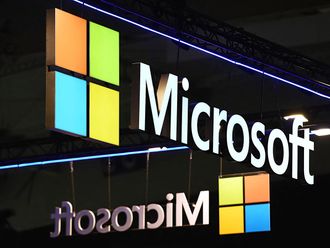
Against the backdrop of a futuristic Star Trek montage, Acer unveiled its revolutionary floating touchscreen hybrid laptop in New York last month. Fittingly, the Aspire R7 may prove to be the final frontier for the laptop as we have come to know it.
Ever since tablets became affordable, popularised and prototyped in the first decade of the 21st century, industry analysts and manufacturers have been counting down the days to the demise of the laptop.
Today, one in four Americans owns a tablet, according to figures by US think tank Pew Research Centre. In China, the third quarter of 2012 witnessed a mammoth 2.6 million tablet sales, which represents a 62.5 per cent year-on-year increase.
By 2016, one in ten people across the world will own a tablet, by which time sales of laptops and desktops will have been eclipsed by tablets for 12 months, according to research firm Gartner.
But laptops are here for a while yet, Jim Wong, Corporate President, Acer, told GN Focus in an interview at the launch. Asked whether the Aspire R7 signals the end of an era, he says: “I don’t think so. We call it progressive design. We continue to listen to customers, and seize any chance we can to improve our products.”
The R7 features a moveable 15.6-inch, 1080p touch screen as well as a conventional touch keyboard. The device also boasts an all-new “ezel”, which allows the screen to come closer to the user, adjust the angle or completely flip around to face the other direction.
Duality
But the most significant design modification is the inclusion of the touch screen, which for Acer — recognised as the champion of the traditional laptop — is a big adaptation. Wong calls it an essential “duality” for modern computing.
Asked if this paves the way for companies such as Acer to ease the transition from laptops to pure tablets, Wong says: “I think it’s not going to happen, at least [not] in the next two to three years.
“A lot of educated people today type faster than they write, so behavioural changes take a long time. Our generation is so used to typing on a physical keyboard. So that’s the reason we have touch and type integrated together. Maybe in time voice will come into the set-up as well.”
The increasing obsequiousness of IT manufacturers in catering to the very basic senses of human anatomy and physiology has meant that lumping any cumbersome device weighing more than two kilograms around is simply out of the question.
But the fact is human whims now demand that devices evolve to meet us on a preferred ergonomic playing field. And the tablet has simply accelerated the expectation that technology is headed irrevocably towards human interface.
Samsung recently launched the ATIV Smart PC range — hybrid devices that feature traditional keyboard and touchpad, a touch screen and a disconnectable screen for users on the move. But the company is confident that the accoutrements and benefits of the laptop and desktop computers will hold firm for a while yet.
“There is no doubt the expansion of the tablet market on a global scale is fierce,” says Raj Varma, General Manager — IT Division, Samsung. “However, the original characteristics of notebooks, such as productivity and performance, will always remain a key demand of consumers.
“In the future, we expect the boundaries between notebook and tablet will continue to fade. But despite the merging of functionalities among IT devices, one thing is clear — PCs will always have a demand for consuming, creating and sharing content.”
Lightest, thinnest
Increasing portability and decreasing weight have been the biggest changes within the notebook and laptop market over the past decade, and this trend for the lightest and thinnest devices is likely to continue.
Rising IT consumerisation is a hot topic within the industry and a key issue being addressed by vendors. New technology receiving wide acceptance by consumers and the subsequent trend being transferred and influencing the business environment is a crucial juncture for manufacturers and consumers alike.
“Otherwise known as the bring your own device (BYOD) trend, we have witnessed this tendency being adopted in the Middle East. An example is the recent transition of the PC environment to a mobile platform, providing business users limitless productivity and capabilities on the move,” says Varma.
“As a result, we expect to see a rise in hybrid notebook and tablet devices in this category.”












